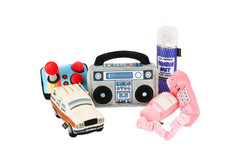Whether your new family member is a floppy-eared puppy, an aloof rescue cat, or a docile sun lounging lizard, you can expect plenty of snuggles, accidents, and laughter. New pets bring out the best in us and the people we live with. When a pet first settles in, it has the potential to draw friends and family together, and the communal effort to help your pet adjust is deeply rewarding. However, before you get carried away, you must assess your current home and garden space to ensure your pet is safe and has plenty of room to express itself.
Indoor Spaces and Your New Pet
Even if you feel happy and safe inside your house, the same may not apply to your pet. Although indoor spaces are fairly safe from external dangers like wild animals and adverse weather conditions, you should still make preparations for your pet to stay safe and happy in and out of the house.
Household Safety and Your Pet
While dogs tripping over their tails and cats jumping in front of their reflection can be hilarious, there are a few accidents in the home that you’ll need to plan for and avoid. If you’re a messy chef, it’s worth investing in gates to close off the kitchen at dinner time. A quick way to assess your home for pet safety is to walk the house and complete a deep clean. This way, you’ll get into all the nooks and crannies that could potentially pose a danger to your pet.
Designing Pet Spaces
If you have an underutilized space in your home, it’s worth considering a dedicated pet room. A pet room is probably just what you might imagine it to be: a space for your pet to relax and play. It’s also a great way for you to separate pet-related things (toys, beds, baths, etc) from the rest of your house. If done correctly, a pet room can add to your pet’s quality of life and help you keep the rest of your home in order.
Not everyone has the luxury of an extra room for their pet, and that’s ok! There are still plenty of ways for you to create a stimulating but organized environment for your pet to enjoy. The easiest and most rewarding way is to simply create a small space for your pet. This space can vary from a chair dedicated to their use or a kennel where they can keep their favorite toys.
Aging AnimalsEventually, your pet will grow into old age. They won’t be quite as spritely as they used to be, and completing certain tasks may be a little more challenging for them. It’s worth taking stock twice a year to assess your pet and how you could accommodate your shared space for their aging needs.
One creative way to manage space for aging animals is to create comfortable pathways for them to navigate. This is particularly important if your pet suffers from arthritis or has general issues moving about. If your dog is struggling to stay balanced on hardwood floors, add a few rugs about the house for them to walk on. If your bird is reluctant to fly, consider adding a new perch or moving their food and water to an easier location.
Garden Spaces and Your Pet
Outdoor spaces are essential for nearly every pet’s wellbeing. A backyard or a garden can provide stimulation, room to play, and discover new wonders. However, you don’t want your pet to experience harm or wound other living things while adventuring in your backyard. For these reasons, it’s best to pet-proof even your outdoor spaces, and potentially find ways you can accommodate their needs.
Safety Outdoors
Watching your pet run free and enjoy your garden space is probably one of life’s greatest joys — even the oldest of dogs can catch the zoomies on a beautiful summer evening. However, the garden can also contain some serious hazards for pets of all shapes and sizes, so you need to plan before allowing your pet to roam free in any outdoor space.
The first simple step is to assess the visible components of your garden. Take stock of the plants that may grow in your garden or backyard. If you have any plants that may be toxic to pets or if you utilize any fertilizer or insecticide that could be toxic, it’s best to switch to safer solutions. Unfortunately, pet insecticide poisoning is all too common in households across the U.S., and easily avoidable by utilizing pet-friendly gardening solutions or consulting pet-friendly pest control services.
The garden should be a fun space where you and your pets can relax and enjoy being outside. By ensuring you thoroughly check every fence panel and plant before your pet arrives, you can allow your pet to enjoy the space with confidence.
Creative Outdoor Spaces
On top of making sure your outdoor space is safe for your pet, you can also make creative preparations in your garden that could fit their needs. Of course, this may require plenty of planning and landscaping. For one, you’ll need to map out your backyard and garden. Measure the dimensions of your garden and lay out the space in a journal or notebook. Once you have the raw space laid out, fill in the non-moveable areas of the space, so you can gain stock of what you have to work with.
Once you’ve mapped out your usable space, it’s time to plan for all four seasons. Depending on your climate, you’ll need shade for your pet during the summer months, a dry spot for rainy seasons, and an area close to the house for winter. You also need to ensure the surfaces your pet will walk on are appropriate — particularly in the summer months where concrete or tiles can easily burn paws. One of the best ways to create shade and dry spots is to invest in some sails for your garden. Sails are cheaper than trees, require less maintenance, and they can add an interesting vertical dimension to your garden.
Once you have your seasonal building blocks in place, you can get creative with the space you have. For example, if you have a small dog, box hedging can be a great way to create beautiful tracks for them to run in. If you have an outdoor cat that loves to climb, patio furniture can double as a comfortable place to lounge and adventure to higher spots in your backyard.
When our pets are outside, they are usually playing and wearing themselves out. As such, you need a good water source to ensure they don’t become dehydrated — even in the winter. While this certainly can be as simple as a water bowl on the back porch, water features with clean, running water can add to the aesthetic of your garden while also providing an area to cool off.
Ultimately, creating a garden and a space inside your home for your pet is all about planning. You have to get a good idea of your resources and budget before you break any ground. Otherwise, you’ll find yourself with disorganized spaces that might not be appropriate for your pet. Remember, after safety, the most significant factor is your creativity. By better utilizing your existing space, your pet can enjoy your entire home.





